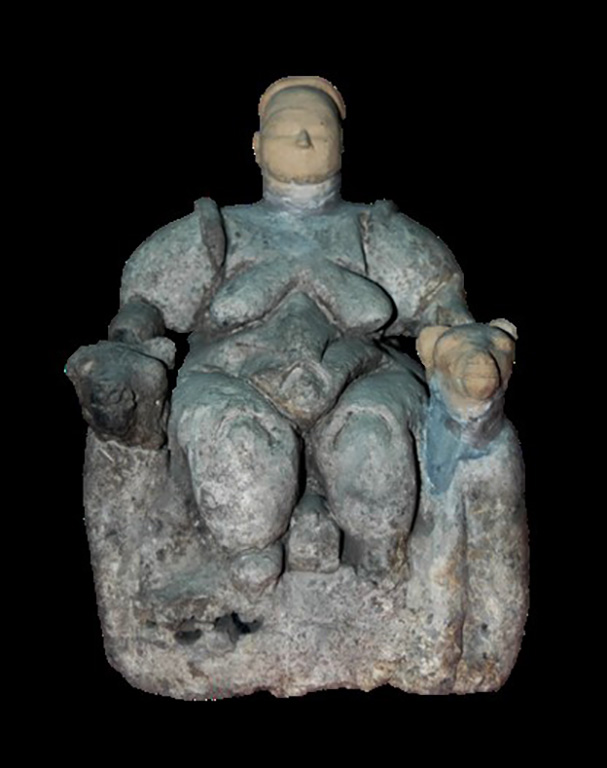By Jenna Tinning

Archaeologists frequently reinterpret their finds. This could be due to a new discovery, or further analysis of an artefact that is already found. Archaeological theories are often the products of their time. It is therefore important when forming our interpretations that we act with caution and always search for the latest research and evidence available. A prime example of such archaeological reinterpretation is shown at Ҫatalhöyük, wherein the popular conception of the ‘mother goddess’ figurines has been challenged.
James Mellaart, who was the first to lead excavations at the site, interpreted the discovery of female figurines as representing the belief in a female goddess. Some experts on prehistoric art warn that we shouldn’t read too much into these figurines and suggest that they may simply have been creating “art for art’s sake.” In contrast to this many others hold the opinion that “they are symbolic expressions of the psyche of ancient peoples” (Balter 2005, 24).
A lead figure that has influenced the perceptions which many have come to hold about such female figurines is Marija Gimbutas. She advocated the notion of an omnipotent Mother Goddess, who was worshipped with cultural continuity from the Palaeolithic era to modern times (Meskell 1995, 74). When James Mellaart discovered these voluptuous figurines at Hacilar in the 60s, and later at Çatalhöyük, they sparked a media sensation. Newspapers now carried headlines that depicted a complex, symbolically-rich culture, shattering previous conceptions of the Neolithic and centring on an ancient belief in a goddess of fertility.

Now let’s imagine the same scenario of Mellaart discovering these female figurines, but with the addition of masculine and animal figurines also being unearthed. Do you think the same media sensation would have been sparked? It’s debatable. It wasn’t until Ian Hodder’s longer period of excavation at the site that the numerous figurines in animal and masculine form were discovered, excavated from new areas of the site and otherwise discarded in Mellaart’s spoil heap. In his selective study of just the female figurines, Mellaart potentially altered the picture significantly, and these more recent discoveries have consequently led to a reassessment of the ‘mother goddess’ theory.
Lynn Meskell and Carolyn Nakamura (e.g., see their open-access report in Meskell and Nakamura 2005) in particular have published a comprehensive and representative range of figurines from the site which balance out the female figurine finds.
How would you interpret the different figurines?
Balter, M (2005). The Goddess and the Bull. Çatalhöyük: An Archaeological Journey to the Dawn of Civilisation. London: Free Press.
Meskell, L. Nakamura, C. (2005). Çatalhöyük Figurine Archive Report. Çatalhöyük Archive Report 2005.
Meskell, L (1995). Goddesses, Gimbutas and ‘New Age’ archaeology. Antiquity, 69 (262), 74-86.





